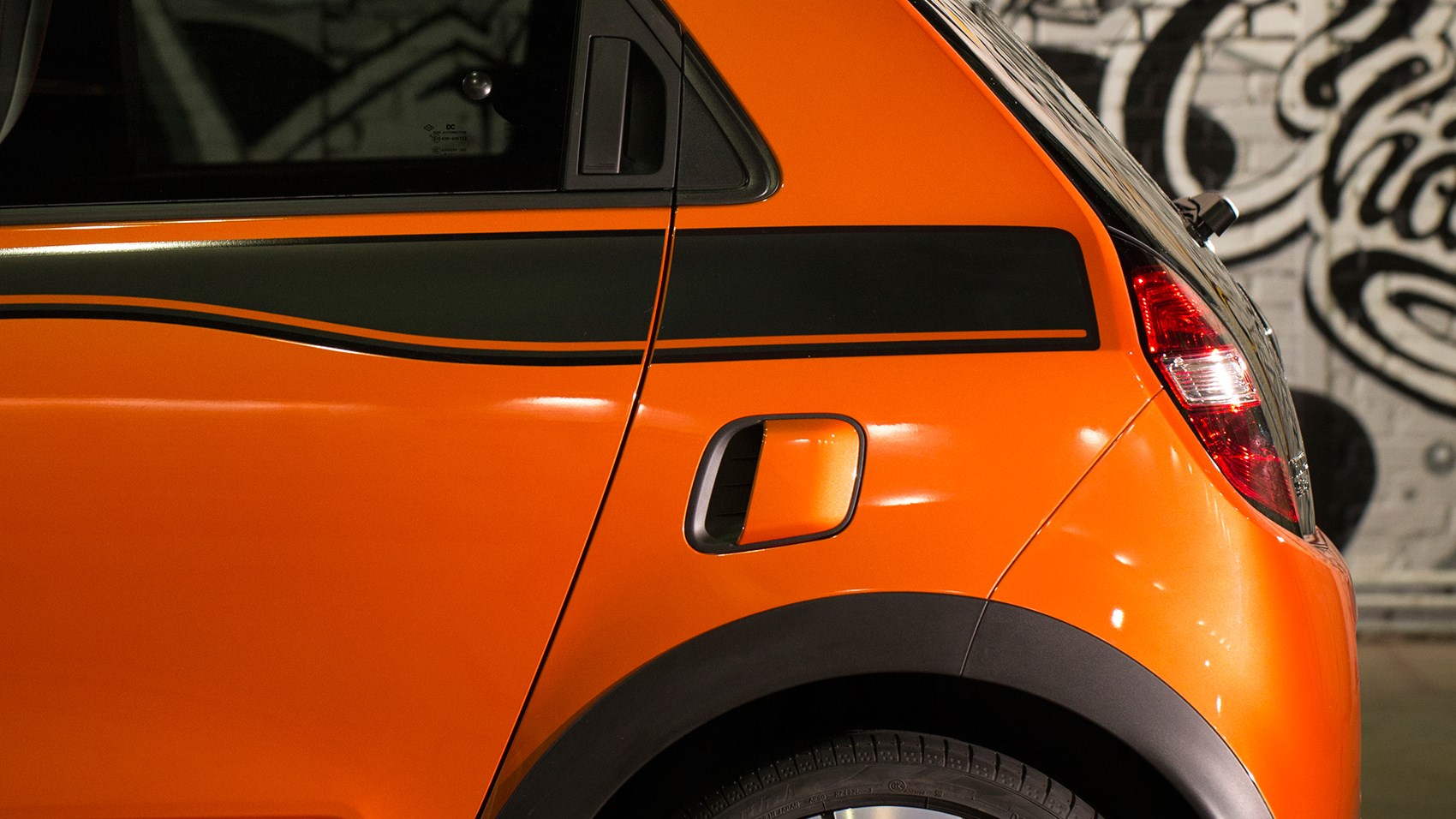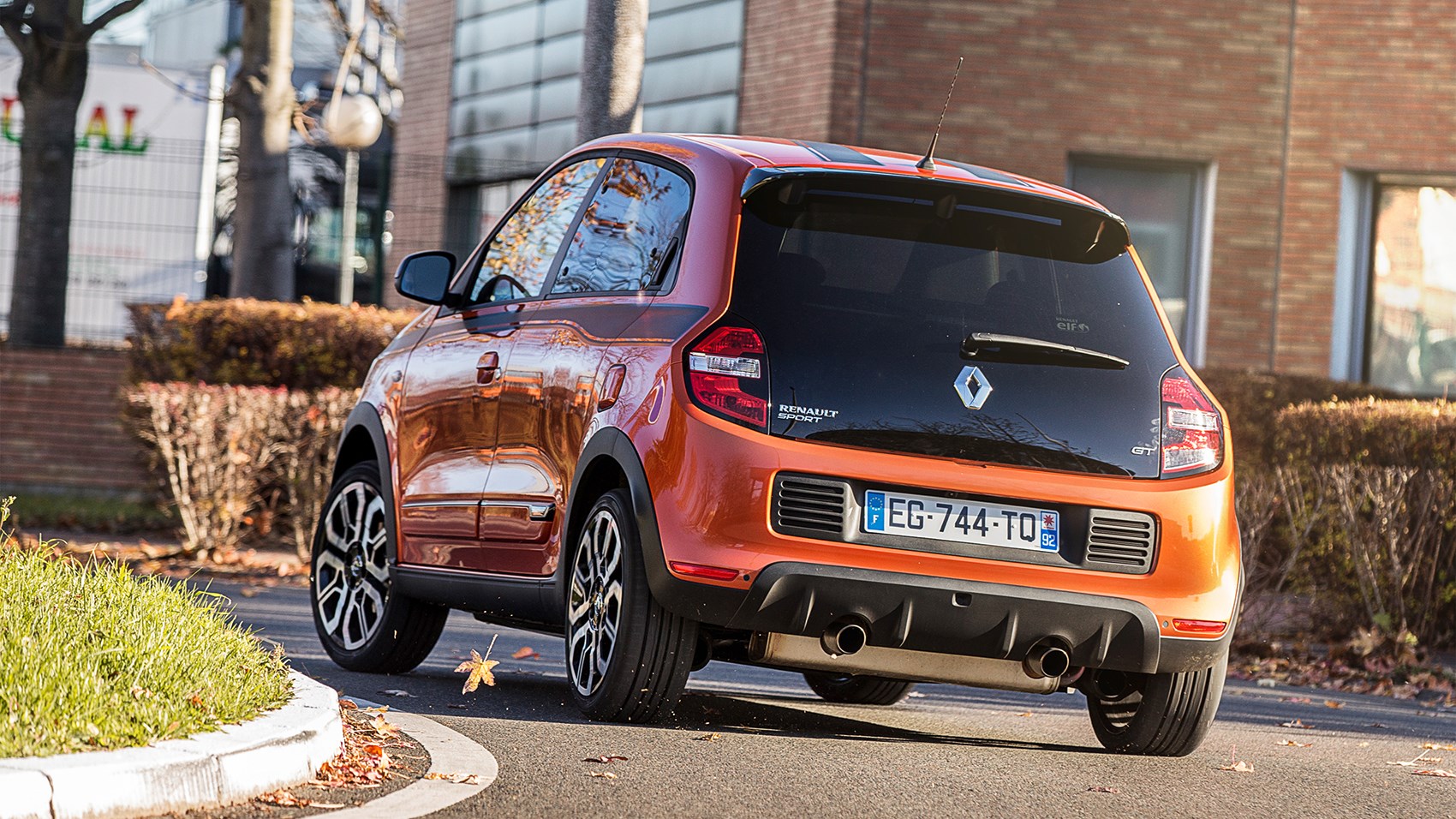► Warmed-up Twingo tested
► Extra power, quicker steering
► Flawed but likeable rollerskate
This is pretty much as hot as the current rear-engined Renault Twingo is going to get. There won’t be a full-fat RS version – predominantly because a larger, more powerful engine simply won’t fit – so this GT version, mildly microwaved by Renault Sport’s engineers, represents the high watermark for current-era Twingo performance.
Apart from a shiny set of 17-inch alloys and optional go-slightly-faster decals, the main outward clue to the 898cc turbo engine’s 20bhp power hike (up to a cap-tip-worthy 108bhp) is a mini air intake above the left rear wheelarch, feeding cold air to the faster-spinning turbo, aided and abetted by upgraded water- and fuel pumps. A freer-breathing twin-tipped exhaust system helps, and manages a pleasantly bassy note.

Does it feel faster?
You notice the extra urge immediately, with credibly eager response throughout the rev range, helped as much by a throttle remap and a shorter set of ratios for the five-speed manual ’box (still no rev counter, though) as by the harder-working turbo. Performance is temperate rather than blistering, but it’s more than pokey enough to be fun. It doesn’t feel like it needs to be faster.
And does it handle better?
A new variable-ratio, speed-sensitive rack gives the GT more responsive steering than the ponderous set-up in our old long-term Twingo, in which negotiating a roundabout felt much like opening a bank vault. The reduction in arm twirling is welcome, but feedback’s still vague. It’s more direct than Twingo naturelle, but not exactly overburdened with feel. Still, with the geometry unchanged the GT shares the same impossibly tiny turning circle, something of a Twingo party trick.
Suspension sits 20mm lower (not that you’d notice – the Twingo’s still a tall car, even by modern standards), on new dampers, with a thicker anti-roll bar. There’s no increase in track – shame, imagine how great it would look with box arches? The new set-up’s a whopping 40% stiffer front and rear than the regular car, but ride quality is actually quite compliant – if anything, Renault Sport’s engineers reckon, slightly better than the regular Twingo. Maybe these are the chassis settings it should have had from the off. Like the standard car, it occasionally gets into a vague front to rear nodding motion on uneven roads, and there’s a little more body roll than you might expect. Though more nimble than the regular Twingo, the GT still handles a bit like a waiter carrying a stack of plates. Pity about the mushy-feeling brake pedal too, with the standard stoppers carried over unchanged.

The unswitchoffable stability-control system’s been reprogrammed to allow a small amount of oversteer at low speeds, but it still cut in swiftly during experiments on a small handling course. You get the feeling it’s not just space in the engine compartment that precludes a full-on RS variant, but physics too; it would probably require a few more substantial chassis revisions to cope with much more power.
Verdict
The Twingo as a whole remains a flawed but very enjoyable car. The yet more characterful, and more dynamically adept, GT is the most likeable model of the range. Just don’t expect it to drive like a miniature 911 – or a miniature Renault Sport Megane.